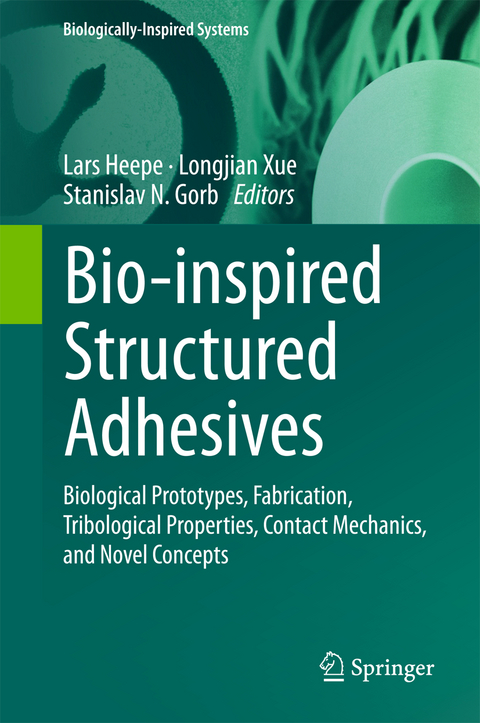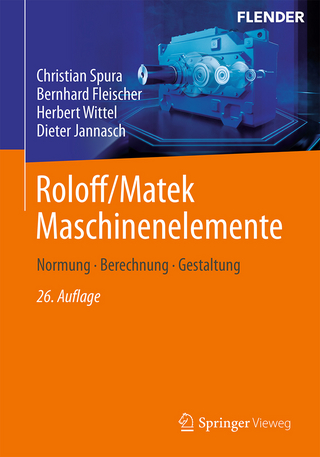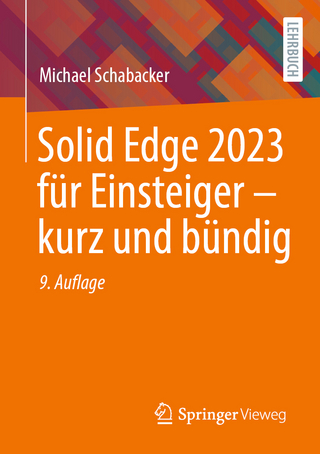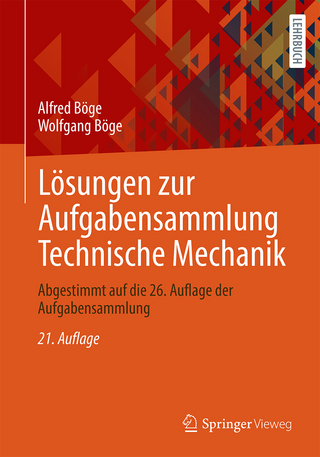
Bio-inspired Structured Adhesives
Springer International Publishing (Verlag)
978-3-319-59113-1 (ISBN)
This book deals with the adhesion, friction and contact mechanics of living organisms. Further, it presents the remarkable adhesive abilities of the living organisms which inspired the design of novel micro- and nanostructured adhesives that can be used in various applications, such as climbing robots, reusable tapes, and biomedical bandages. The technologies for both the synthesis and construction of bio-inspired adhesive micro- and nanostructures, as well as their performance, are discussed in detail.
Representatives of several animal groups, such as insects, spiders, tree frogs, and lizards, are able to walk on (and therefore attach to) tilted, vertical surfaces, and even ceilings in different environments. Studies have demonstrated that their highly specialized micro- and nanostructures, in combination with particular surface chemistries, are responsible for this impressive and reversible adhesion. These structures can maximize the formation of large effective contact areason surfaces of varying roughness and chemical composition under different environmental conditions.Lars Heepe is a junior research group leader at the Department of Functional Morphology and Biomechanics at the Zoological Institute of Kiel University, Germany and guest scientist at the nanotechnology centre NanoSYD of the Mads Clausen Institute, University of Southern Denmark. He received a B.S. degree in Engineering Physics from The Jena University of Applied Sciences, Germany in 2008. In 2011 he received a M.S. in Scientific Instruments from same university. After that, he joined the Prof. Stanislav N. Gorb’s group at Kiel University, where he obtained his Ph.D. in Biophysics in 2014. In 2014 he was awarded with the Best Dissertation Award of the Faculty of Mathematics and Natural Sciences, Kiel University, Germany and in 2015 he received the Fraunhofer UMSICHT Science Award as well as the best dissertation award in the category “Nano Life Sciences” of the research focus Kiel Nano, Surface and Interface Science. He is member of the “Young Academy” of the Academy of the Science and Literature Mainz (2016). His research interests include adhesion, friction and contact mechanics of biological and biologically inspired attachment systems, the development of space-, time- and force-resolved in situ tribological characterization techniques, as well development of surfaces preventing marine biofouling. Longjian Xue is Professor of Materials in School of Power and Mechanical Engineering at Wuhan University, China. He received B.S. degree in Chemistry from Wuhan University in 2004. After that, he was recommended for the admission of Changchun Institute of Applied Chemistry, Chinese Academy of Sciences, where he earned his Ph.D. degree in Polymer Chemistry and Physics in 2010. After his short stay in Rheinisch-Westfaelische Technische Hochschule Aachen, Germany, he worked as an Alexander-von-Humboldt Fellow with hosts of Prof. Martin Steinhart from Osnabrück University and Prof. Stanislav N. Gorb from Kiel University. He then joined Prof. Aránzazu del Campo’s Group in Max Planck Institute for Polymer Research in Mainz, Germany. In 2015, he was awarded “young 1000 talents” and joined Wuhan University as Professor. His research interests include investigation of stability/instability of thin polymer films, using bottom-up methods for surface patterning, fabrication and evaluation of bio-inspired micro- and nanomaterials for varies applications. He has authored 40 papers in peer reviewed journals, and has three patents. Stanislav Gorb is a group leader at the Zoological Institute of the University of Kiel, Germany. He received his PhD degree in zoology and entomology at the Schmalhausen Institute of Zoology of the Ukrainian Academy of Sciences in Kiev. Gorb was a postdoctoral researcher at the University of Vienna, a research assistant at University of Jena, a group leader at the Max Planck Institutes for Developmental Biology in Tübingen and for Metals Research in Stuttgart. Gorb’s research focuses on morphology, structure, biomechanics, physiology, and evolution of surface-related functional systems in animals and plants, as well as the development of biologically inspired technological surfaces and systems. He received the Schlossmann Award in Biology and Materials Science in 1995 and was the 1998 BioFuture Competition winner for his works on biological attachment devices as possible sources for biomimetics. He is member of the Member of Academy of the Science and Literature Mainz (2010) and of the National Academy of Sciences Leopoldina (2011). Gorb has authored five books, more than 300 papers in peer reviewed journals, and four patents.
Biology.- Biological prototypes for bio-inspired adhesives.- Adhesion and friction in biological attachment systems.- Fabrication.- New routes for large-scale fabrication of bio-inspired adhesives Characterization.- Bridging the gap: from JKR-like to conformal adhesion testing.- Adhesion, Friction, and Contact Mechanics.- Adhesion scaling of mushroom-shaped adhesive elements.- Different failure types in the adhesion of bio-inspired adhesives.- Material, structural, and material property gradients in fibrillar adhesive systems.- Role of viscoelasticity in bio-inspired adhesives.- Friction of hexagonally patterned elastomeric films.- Switchability.- Pressure sensitive adhesion: switchable adhesion by curvature control of inflated elastic membranes.- Current strategies of switchable adhesion.- Applications.
| Erscheinungsdatum | 16.08.2017 |
|---|---|
| Reihe/Serie | Biologically-Inspired Systems |
| Zusatzinfo | XVIII, 348 p. 197 illus., 79 illus. in color. |
| Verlagsort | Cham |
| Sprache | englisch |
| Maße | 155 x 235 mm |
| Gewicht | 713 g |
| Themenwelt | Technik ► Maschinenbau |
| Schlagworte | adhesion testing • adhesive systems • bio-inspired adhesives • bio-inspired structures • Biological and Medical Physics, Biophysics • biomaterials • Biomedical and Life Sciences • biomedical engineering • Biophysics • Biotechnology • Condensed matter physics (liquid state & solid sta • Condensed matter physics (liquid state & solid sta • Contact Mechanics • friction in biological attachment systems • friction of elastomeric films • Materials Science • medical physics • nanoscale science and technology • nanotechnology • Surface and Interface Science, Thin Films • switchable adhesion • viscoelasticity in bio-inspired adhesives |
| ISBN-10 | 3-319-59113-4 / 3319591134 |
| ISBN-13 | 978-3-319-59113-1 / 9783319591131 |
| Zustand | Neuware |
| Informationen gemäß Produktsicherheitsverordnung (GPSR) | |
| Haben Sie eine Frage zum Produkt? |
aus dem Bereich


